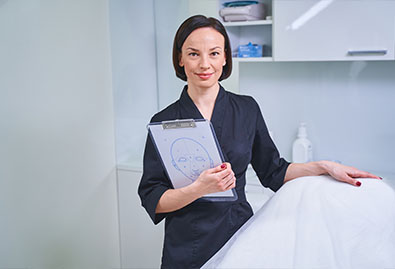TAMA is a trusted name in medical aesthetics training, offering licensed nurses, physicians, and dental professionals the hands-on experience and clinical knowledge they need to confidently perform procedures like Botox, dermal fillers, and PRP treatments.
Many injector trainees and aspiring clinic owners underestimate the comprehensive nature of medical director oversight. They view it merely as a regulatory checkbox instead of being the cornerstone of clinical excellence.
This article will guide you through the essential responsibilities that define effective medical director leadership in aesthetic medicine.



This role extends far beyond being a figurehead or signature on documents. Medical directors in aesthetic clinics actively shape treatment standards, mentor clinical staff, and ensure every patient interaction meets the highest medical standards.
Closing the gap between operations and clinical excellence, medical directors create an environment where patient safety and business growth can coexist.
Treatment protocols must align with established medical standards while addressing the unique needs of aesthetic patients.
Treatment plans must tackle the specific needs of patients and meet accepted medical standards at the same time. To protect both patients and practices, medical directors develop comprehensive consent processes. This helps facilitate more informed decisions in every patient’s treatment journey.
In aesthetic medicine, patient expectations and medical realities sometimes don’t agree. This makes risk management especially crucial. Through appropriate treatment selection, proper documentation, and transparent communication protocols, medical directors can provide liability protection.
Adverse events can sometimes happen. But with a medical director present, prompt clinical advice can be given, while the clinic can follow protocols designed to manage such events. Their expertise ensures complications receive appropriate medical attention while maintaining practice standards and patient confidence.
Quality assurance extends to clinical record-keeping, where medical directors establish documentation standards that protect both patients and practices. Proper charting creates accountability while providing essential information for ongoing patient care and potential medical-legal situations.
Keeping practices aligned with evolving best practices requires continuous education and protocol updates. Medical directors evaluate new technologies, assess emerging treatment modalities, and integrate evidence-based approaches that enhance patient outcomes while maintaining safety standards.
Professional development becomes particularly important in aesthetic medicine, where techniques and products are always evolving. It’s the job of medical directors to establish learning environments that not only support development but also uphold high standards for all treatments.
Ethical marketing practices require medical director guidance to ensure treatment claims remain accurate and achievable. This oversight shields practices from legal problems while fostering meaningful patient relationships built on open communication.
Medical directors are uniquely qualified to help a clinic strategically strike a balance between compliance and business growth. Their clinical viewpoint guarantees that the practice can uphold safety regulations and, at the same time, maximize patient satisfaction and treatment results.
Aspiring clinic owners who understand a medical director’s responsibilities can better evaluate potential partnerships, establish proper oversight structures, and create practice environments that prioritize both patient safety and business success.
Future leadership opportunities often emerge from a good understanding of medical director functions. Injector trainees who grasp these responsibilities position themselves for advancement into supervisory roles and eventual practice ownership.

Medical directors serve as the cornerstone of compliant, safe, and reputable aesthetic practices. Their responsibilities encompass legal compliance, clinical oversight, staff development, and reputation management—all essential elements for sustainable practice success.
If you’re an injector trainee or aspiring clinic owner, you must gain a deep understanding of medical director responsibilities to enhance your career prospects and treatment capabilities.
At the Texas Academy of Medical Aesthetics (TAMA), we empower nurses, nurse practitioners, physicians, and dental assistants with expert-led training that includes guidance on medical oversight, compliance, and business strategies tailored to modern aesthetic practices.
TAMA’s hands-on training approach and medically approved techniques provide the clinical edge healthcare professionals need to succeed in aesthetics.
Ready to strengthen your understanding of medical director responsibilities? Contact us today to learn more about our comprehensive courses and career planning resources.